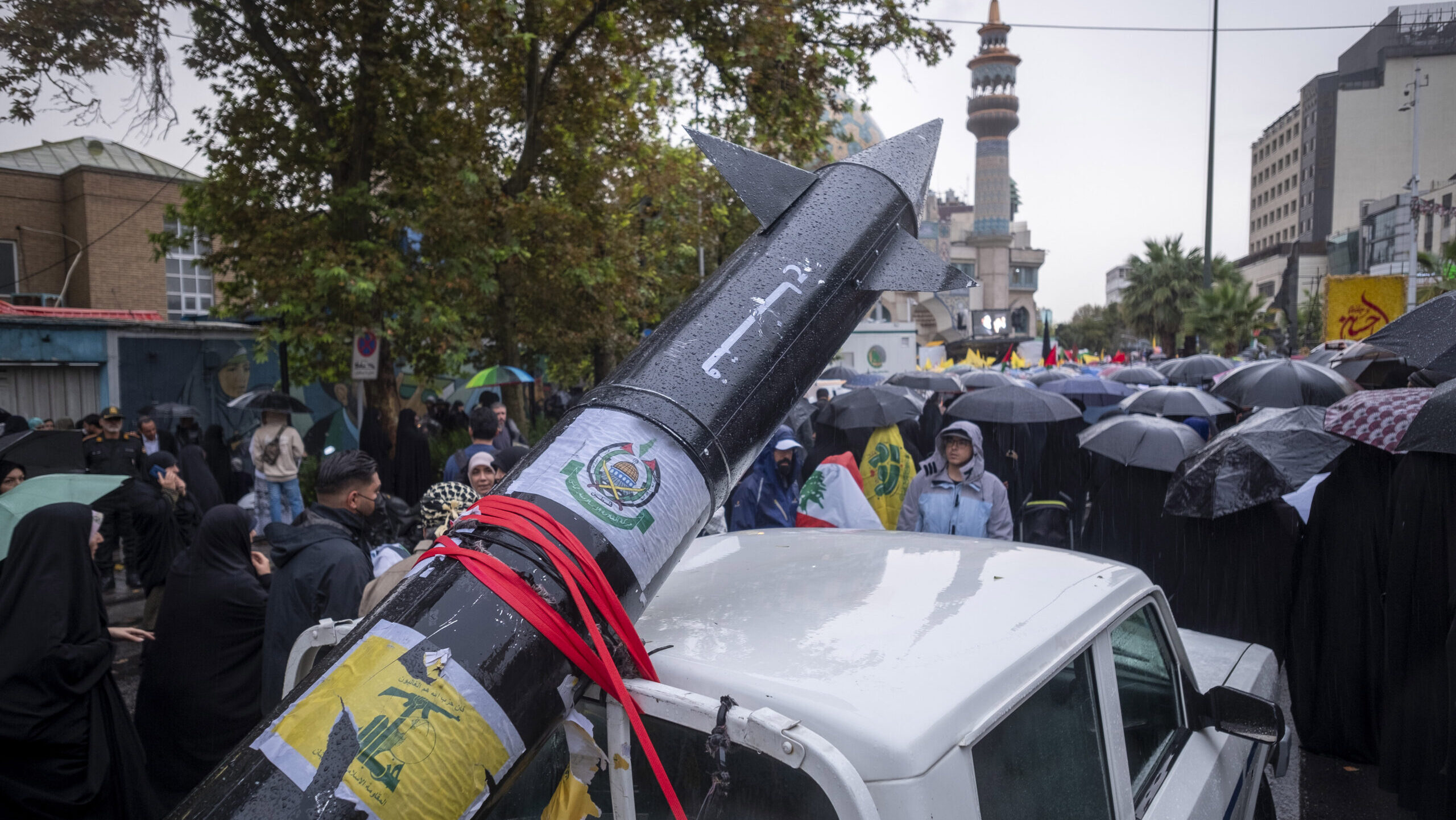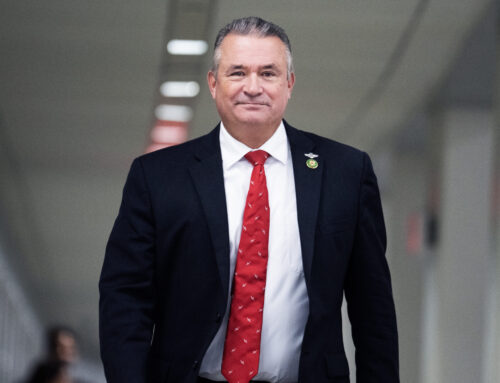A scaled model of Iran’s first ultrasonic missile (Fattah) is carried by a truck during a protest gathering in Tehran, Iran, on September 28, 2024. (Photo by Morteza Nikoubazl/NurPhoto via Getty Images)
BEIRUT — Ten days after the death of Hezbollah leader Hassan Nasrallah and amid an aggressive Israeli bombardment, a senior Hezbollah official today attempted to assauge any of the group’s concerns by saying its capabilities are “fine.” The claim comes as experts say that the Iran-backed group, at least, has shown off the range of its arsenal, firing several new missiles and rockets for the first time in recent weeks.
“Hundreds of rockets and dozens of aircraft, a great number of settlements and cities have come under rocket fire,” Naim Qassem, deputy leader of Hezbollah, said today in a televised speech in Arabic, with his use of “aircraft” likely referring to drones. “I would like to reassure you that our capabilities are fine.”
Hezbollah’s capacity to fight is a key question as the conflict in Lebanon intensifies, after the Israeli military said it has managed to take out several of the groups top leaders, in addition to striking hundreds of its members. Israeli Prime Minister Benjamin Netanyahu said in a video posted online today that Hezbollah is “weaker than it has been for many, many years.”
But as Israel has been striking Hezbollah, the group has been firing back — over 3,000 rockets and missiles in the last two weeks, according to the Israel Defense Forces.
Experts specifically pointed to Hezbollah’s use of several new projectiles, including the Qadr 1 ballistic missile, Noor cruise missiles and Fadi 4 and Falaq 2 rockets. Hezbollah claimed to have used the Qadr 1 last month and the others more recently, according to public statements.
“The use of new, more sophisticated missiles by Hezbollah signals an escalation as well as a political message to show off strength for deterrence, especially amid the step up by Netanyahu,” defense analyst Sine Özkaraşahin told Breaking Defense.
She added that level and sophistication of the systems seen in the recent strikes show that “Hezbollah is taking the fight deeper, most likely with Iran’s support.”
Ozkarsahin specified that the newly introduced missiles “come with a greater payload, longer-range. For example, Qadr-1 is a guided ballistic missile with deep-strike capabilities, [a] significant shift from the unguided short-range rockets that used to dominate Hezbollah strikes.”
Likewise, Stockholm International Peace Research Institute senior researcher Pieter Wezeman said that after Israel escalated its fight with Hezbollah in Lebanon, the use of the new missiles like likely the group’s attempt to “counter-escalate.”
Wezeman also said that Hezbollah, likely spooked by Israel’s ability to locate and kill senior members, may have opted a “use-over-lose” approach to the missiles, firing them before they can be struck by Israel.
IDF has been bombing what it considered Hezbollah missile and rocket warehouses in South Lebanon, the Beqaa Valley and the southern suburb of Beirut. In several instances, open sources and televised video footage show secondary explosions after a number of Israeli raids, suggesting explosives or armaments of some kind were stored in the facilities.
Behnam Ben Taleblu, an analyst at the Foundation for the Defense of Democracies think tank, said, however, that Hezbollah’s current missiles and rocket barrages still aren’t what the use of the Qadr 1 may have signaled at the time.
“With the exception of the Qadr, which is Hezbollah’s first ballistic missile fired ever at Israel — and is a variant of Iran’s older Fateh family of short-range ballistic missiles — most of the projectiles Hezbollah has fired at Israel have been unguided and spin-stabilized rockets, larger artillery, drones, and anti-tank weapons. This includes the Falaq and Fadi systems,” he said.
He stressed that Hezbollah “used this cocktail to incrementally widen the war of attrition imposed on Israel starting on October 8 last year. The use of the Qadr several weeks back however as a guided projectile had the potential to be a game changer if part of a larger campaign to move towards more missile use than rockets. But Israel’s rapid and bold string of military successes against Hezbollah prevented this trial ballon from being floated.”
Ben Taleblu also said Hezbollah isn’t the only enemy of Israel apparently escalating its use of missiles
“Iran’s employment of more solid-propellant systems in its October barrage against Israel, and in general employing nearly double the amount of ballistic missiles marks a clear shift,” Ben Taleblu said, adding that the use of a new Fattah missile was a “historic first and a sign that Tehran indeed wanted to strike at Israeli targets and was willing to up the ante compares to the April attack.”
“Iran chose to escalate after absorbing a series of setbacks to its regional terror network that did away in days what the Islamic Republic took years to build and cultivate,” Ben Taleblu said.
As for whether the new missiles have actually been more effective, Israel reported no deaths outside a man killed in the West Bank in the more recent barrage by Iran. Still, Wezeman said reports indicate some projectiles launched then appear to have gotten through, suggesting they “have a higher chance of penetrating the missile defenses that Israel and its allies have available.”
Hezbollah’s Qadr-1 missile, the Israelis say, was intercepted before it could strike its target.









